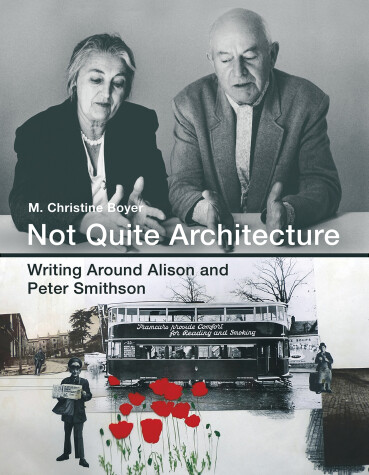The MIT Press
3 total works
Dreaming the Rational City is both a history of the city planning profession in the United States and a major polemical statement about the effort to plan and reform the American city. Boyer shows why city planning, which had so much promise at the outset for making cities more liveable, largely failed. She reveals planning's real responsibilities and goals, including the kind of "rational order" that was actually forseen by the planning mentality, and concludes that the planners have continuously served the needs of the dominant capitalist economy.
Christine Boyer faces head-on the crisis of the city in the late twentieth century, taking us on a fascinating journey through theaters and museums, panoramas and maps, buildings and institutions that are used to construct a new reading of the city as a system of representation, a complex cultural entity. Boyer brings together elements and concepts from geography, critical theory, architecture, literature, and painting in a synthetic and readable work that is broad in its reach and original in its insights. What finally emerges is a sense of the city reinvigorated with richness and potential.
The City of Collective Memory describes a series of different visual and mental models by which the urban environment has been recognized, depicted, and planned. Boyer identifies three major "maps": one common to the traditional city-the city as a work of art; one characteristic of the modern city-the city as panorama; and one appropriate to the contemporary city-the city as spectacle. It is a richly illustrated and documented study that pays considerable attention to the normally hidden and unspoken codes that regulate the order imposed on and derived from the city. A wide range of secondary historical literature and theoretical work is considered, with evident debts to structuralist analysis of urban form represented by Aldo Rossi, as well to much post-structuralist criticism from Walter Benjamin to the present.
The English architects Alison Smithson (1928–1993) and Peter Smithson (1923–2003) were ringleaders of the New Brutalism, active in CIAM and Team 10, and influential in English Pop Art. The Smithsons, who met as architecture students, built only a few buildings but wrote prolifically throughout their career, leaving a body of writings that consider issues in architecture and urbanism and also take up subjects that are “not quite architecture” (the name of a series of articles written by Alison Smithson for the Architects' Journal)—including fashion design, graphic communication, and children's tales. In this book, M. Christine Boyer explores the Smithsons' writings—books, articles, lectures, unpublished manuscripts, and private papers. She focuses on unpublished material, reading the letter, the scribbled note, the undelivered lecture, the scrapbook, the “magic box,” as words in the language of modern architectural history—especially that of postwar England, where the Smithsons and other architects were at the center of the richest possible range of cultural encounters. Boyer is “writing around” the Smithsons' work by considering the cultural contexts in which they formed and wrote about their ideas.
Boyer explains that the Smithsons were intensely concerned with the responsibility of the architect to ensure the quality of place, to build with lyrical appropriateness. They reached back to the country landscapes of their childhood and, Boyer argues, mixed their brand of New Brutalism with the English Picturesque. The Smithsons saw architects as both inheritors and passers-on. Their writings offer juxtapositions and connections, resembling an association of interactive loops, ideas waiting to be transmuted into built form.


